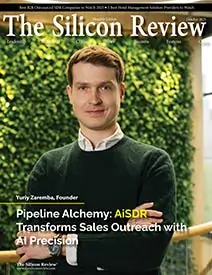>>
Industry>>
Chemicals and fertilizers>>
Dow’s Carbon-Negative Fertil...Dow’s Carbon-Negative Fertilizer Reshapes Agro Supply Chains with Emission-Slashing Precision
The Silicon Review
08 April, 2025
In a pivotal move for sustainable industry, Dow has introduced a carbon-negative fertilizer designed to slash agricultural emissions by up to 50%, signaling a transformative shift in both environmental policy and chemical manufacturing infrastructure.
On March 5, 2025, Dow Inc. introduced a first-of-its-kind carbon-negative fertilizer engineered to reduce greenhouse gas emissions from agriculture by up to 50%, according to a report from Chemical & Engineering News. While this breakthrough marks a major advancement in environmental technology, its true impact may lie deeper—in the automated systems and industrial infrastructure that must now evolve to support it. The new fertilizer, developed using bio-capture technology and synthetic chemistry innovations, doesn’t just reduce emissions from use; it actively removes carbon during production. Dow’s facilities utilize proprietary processes that integrate carbon dioxide directly into the formulation, turning a traditionally carbon-intensive output into a net-negative product.
This development directly challenges current fertilizer production systems, which have remained relatively static in their operational methods. The introduction of a carbon-negative alternative demands precision logistics, climate-adaptive distribution models, and AI-enhanced deployment strategies to scale effectively. Manufacturers and agricultural distributors will need to upgrade their systems to handle not only new chemical compositions but also data-driven usage feedback loops that optimize carbon offsets in real time. Beyond environmental impact, the product signals a turning point in industrial automation across the chemical sector. Dow’s move underscores the growing convergence between sustainability mandates and agile manufacturing, where process control, real-time monitoring, and autonomous optimization aren’t optional—they’re essential.
For companies across the fertilizer supply chain, from raw input processors to digital farming platforms, this shift isn’t just an environmental milestone—it’s a competitive threshold. Those unable to adapt to a high-efficiency, low-emission production model risk falling behind in a market where regulators and consumers alike are demanding quantifiable change. Dow’s innovation doesn’t just clean the air—it rewires the future of industrial chemical design.


 (1)_2025-10-21_13-35-14.webp)

_2025-10-02_10-21-48.webp)

